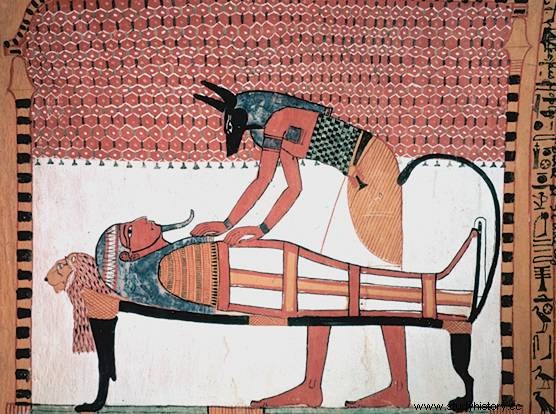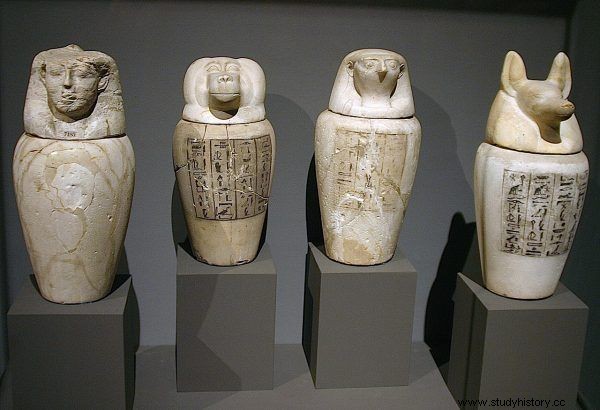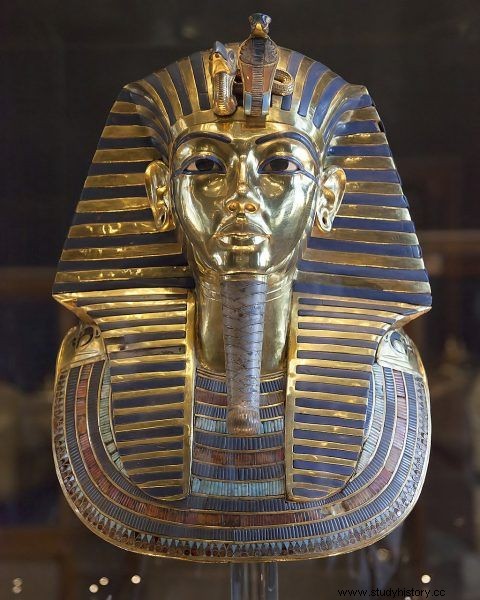Ancient Egypt attracts us with its mystery and wealth. From the very beginning, its inhabitants paid great attention not to dissolve into thin air after death. This is why, throughout this ancient civilization, they have perfected ways of keeping the body in the best possible state after death. Mummies - how and why were they made?
From the earliest times in Egypt, it was a common belief that there was a life waiting for people in an eternal land after death. Moreover, in order to get there, was not allowed to damage the body of the deceased .

The ancient Egyptians considered the brain completely useless after death.
This belief led the ancient Egyptians to devote an enormous amount of energy to the continual improvement of methods of embalming a corpse.
Mummification
What was the effect of the observation that the bodies of the deceased buried in the desert dry up instead of rotting into the introduction of this method of preserving corpses? Has anyone ever come across such a corpse and thought, "Hey! That body in the sand has dried up! ”?
Mummification appeared in ancient Egypt as early as the Second Dynasty, i.e. around 2800 BC. and was already an important element of the funeral rite of the royal family. However, it was only about 200 years later, during the 4th Dynasty, that it reached a level that we can call "real mummification".

According to the beliefs, the first mummification was performed by the god Anubis on the body of the deceased Osiris
In the Middle Kingdom (around 2050-1710 B.C.E.), the mummification of cadavers became more and more popular and began to spread on a larger scale. However, the mummification process itself has not yet been perfected, and the bodies from this period have not been well preserved. The methods were constantly improved, however, and eventually the ancient Egyptians achieved perfection in embalming the bodies of their dead.
Divine mummification origins
According to Egyptian beliefs, the god Anubis was the inventor of the mummification process. He did it for the first time by embalming the body of the god Osiris. This tradition was so deeply entrenched in the minds of the Egyptians that throughout the mummification of the corpse one of the priests wore a jackal mask .
What would I get out of here?
We obtain information on the course of mummification from Greek sources. Here Herodotus, Diodorus, Plutarch and Porphyry come to our aid. Our knowledge on this subject was supplemented by research, among others the mummy of Ramesses II, as well as the anonymous Later Period mummy conducted by scientists in 1986.

During mummification, the internal organs were taken out and placed in canopic urns
So what had to be done to properly perform the mummification process?
- Take the deceased to a special home called house of cleansing .
- Get the brain out. According to Herodotus, it was done through the nose with an iron hook, which was shredded and then taken out. Contemporary research suggests, however, that the value of the skull was extracted thanks to gravity through a rod placed in it .
- Make an incision on the right side with a flint knife and, after breaking the diaphragm, pull out all organs. The internal organs should be embalmed separately and then placed in four canopic urns . Leave only the heart and kidneys in the body.
- Then the body had to be "seasoned" with salt. This was done by a taricheut specially qualified in this field. The body was placed in the natron and left for approximately 35 days . To reduce the blackening of the skin, henna or ocher was applied to it - red for men and yellow for women, respectively. The abdominal cavity was stuffed with linen tampons, sand, sawdust or bandages, and a plaque dedicated to the four sons of Horus was placed at the very intersection.
- The corpse now had to be washed with palm wine and roots and cleaned, the first layer of the mummy's covering was usually a shroud, and then wrapped in bandages. This step followed a strictly defined ritual and was divided into several successive stages. In the following days, the body was covered with a sheet and all limbs were wrapped in linen bandages. Therefore, the fingers or the phallus were bandaged separately. In the next stage, the whole body was wrapped. Amulets, jewels or rose petals were put between the scrolls . From the time of the New Kingdom, additional sacred texts were inserted between the scrolls. For example, we can find the Book of the Dead between the legs of the deceased.
- At the very end, a death mask was put on the face of the deceased . This mask has evolved and over time has become a kind of board that covers the whole body. The entire mummification process in Ancient Egypt took about 70 days.
Life after death only with adequate supplies!
Since the body of the deceased had already been secured against destruction, it now had to be equipped with appropriate equipment. For the Egyptians believed that in that world they would live a life similar to that on earth. It was therefore necessary to put into the grave everything that was necessary for a peaceful and prosperous existence.
This is why we find so many everyday items in graves and tombs. Already in the predynastic period, the dead were buried with modest ornaments, dishes or lipstick trays. The deceased also needed food and drinks, because the worst fate was to remain without them in the afterlife. He would then have to eat excrement and drink urine . Therefore, regular families brought their relatives food, drinks, incense and even clothes, believing that the deceased would be useful in the afterlife.

The most famous death mask is the one that covered the mummified head of Tutankhamun
The Egyptians were so careful and foresight in this matter that they placed the invocation to Osiris in a visible place of the tomb just in case. After reading it aloud, the magic of words was to be revealed, and thanks to this, the god was to materialize all the products necessary for the deceased in the afterlife.
In ancient Egypt, the quality of the embalming process was carried out with the greatest care and accuracy. The need to preserve the body was so important that in the course of embalming itself there was no distinction between rich and poor. It was only the quality of the bandages, the wealth of amulets and death masks, as well as the type and quantity of grave gifts that allowed us to determine who was more important, richer or poorer.
The mummies found in graves have always filled the world with fascination and slight anxiety. The Egyptians have made the embalming process so perfect that sometimes you get the impression that the deceased will simply get up and attack you for disturbing his peace. It is not without reason that so many creations of our culture telling about such cases have arisen.
Literature
- N. Grimal, The History of Ancient Egypt, Warsaw 2004.
- J. Lipińska, M. Marciniak, The Mythology of Ancient Egypt, Warsaw 2002.
- I. Shaw (eds.), The Oxford History of Ancient Egypt, Oxford 2000.
